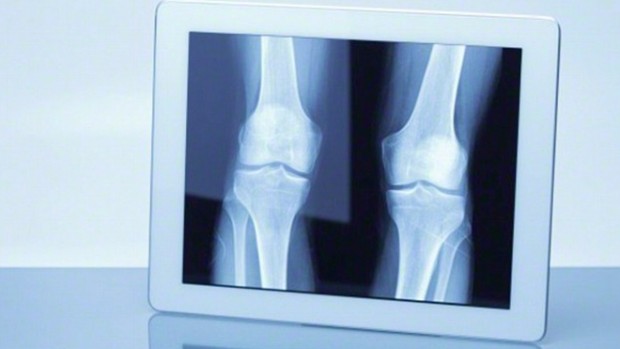Orthotic devices are crucial for individuals experiencing different physical conditions as they offer crucial support, stability, and alignment. With their ability to alleviate pain, enhance mobility, and improve overall quality of life, these devices are effective in addressing a range of problems, from foot-related issues to spinal ailments.
Types of the Orthotic Devices with Short Reviews
We aim to explore various types of orthotic devices, providing detailed descriptions of their purposes and average prices.
- Foot Orthotics:
Foot orthotics are personalized shoe inserts that offer assistance and tackle an array of foot-related issues. These aids are typically utilized for the treatment of plantar fasciitis, flat feet, and arthritis. They function by redistributing pressure, enhancing the alignment of the foot, and delivering cushioning. Foot orthotics can be classified into three primary designs: rigid, soft, and semi-rigid. The cost of foot orthotics can vary between $200 to $800 for a pair. - Ankle-Foot Orthotics (AFOs):
Ankle-Foot Orthotics, commonly known as AFOs, are braces that encompass the foot and extend up to the lower leg. These devices are created with the purpose of offering assistance, stability, and management for people experiencing conditions like drop foot, cerebral palsy, or ankle instability. AFOs come in different styles, such as solid, hinged, or articulated models, depending on the wearer’s requirements. The average cost of AFOs usually begins at $400 and can reach $1,000 or even higher. - Knee Orthotics:
Knee orthotics, also known as knee braces, are tools utilized to provide support and safeguard the knee joint. They are frequently recommended for instances of knee instability, ligament injuries, osteoarthritis, or post-knee surgery. Knee orthotics are available in various forms including sleeves, wraparound braces, and hinged braces. These braces help provide stability, compression, and range of motion control. Prices for knee orthotics range from $50 for basic sleeves to several hundred dollars for advanced hinged braces. - Spinal Orthotics:
Spinal orthotics are devices used to support and stabilize the spine, providing relief from conditions such as scoliosis, spinal fractures, or post-surgical immobilization. These orthotics can be divided into two main categories: cervical orthoses for the neck and thoracolumbar orthoses for the thoracic and lumbar spine. Spinal braces are custom-fit and can be made from various materials, including rigid plastic, metal, or fabric. The prices for spinal orthotics can vary significantly depending on the complexity of the condition treated, ranging from $500 to $4,000 or more. - Upper Extremity Orthotics:
Upper extremity orthotics are designed to support and stabilize the upper limbs, including the hands, wrists, elbows, and shoulders. These devices are commonly prescribed for conditions such as carpal tunnel syndrome, tennis elbow, or after a stroke. Upper extremity orthotics can be in the form of wrist splints, finger splints, or full-arm orthoses. Prices for upper extremity orthotics can range from $50 for simple wrist splints to a few hundred dollars for complex full-arm orthoses.
Best Brands of Orthotic Products
- Dr. Scholl’s: Dr. Scholl’s, a renowned leader in foot care, provides an extensive selection of orthotic items that aim to relieve different foot ailments. Incorporating innovative cushioning technology, their products offer the necessary support and stability for the feet.
- Superfeet: Superfeet has become popular among athletes and outdoor enthusiasts due to its emphasis on biomechanics. The orthotic insoles they produce are designed to improve alignment, increase shock absorption, and alleviate foot discomfort. Because of these qualities, they are highly recommended for individuals leading an active lifestyle.
- Powerstep: Powerstep manufactures top-notch orthotic items that prioritize providing both comfort and support. Their products incorporate a distinct design that combines arch support, cushioning, and stability, effectively tackling prevalent foot issues like plantar fasciitis and flat feet.
- Vionic: Renowned for their stylish and supportive footwear, Vionic also offers a range of orthotic inserts. These inserts are designed with a deep heel cup, contoured arch support, and a cushioned footbed, providing superior comfort and stability for those struggling with foot pain.
- Aetrex: Aetrex is a well-known company that specializes in creating cutting-edge solutions for supporting the feet. Their orthotic products make use of materials like memory foam and gel to offer the best cushioning and shock absorption possible. With a wide range of options available, Aetrex ensures that individuals with various foot conditions can find a customized solution that suits their specific needs.
- Sole: Sole orthotics, created by renowned foot specialists, are acknowledged for their outstanding ability to be tailored to individual needs. These insoles, which can be shaped by applying heat, adapt to the distinct contours of your feet, ensuring personalized comfort and assistance. Sole orthotics prove particularly advantageous for individuals suffering from foot ailments such as plantar fasciitis and overpronation.
- Spenco: Spenco is renowned for their comfortable and supportive shoes and also provides a selection of orthotic items. Their shoe inserts incorporate a blend of cushioning materials and specifically designed arch support, effectively easing foot strain and enhancing overall foot well-being.
- ProFoot: ProFoot focuses on providing affordable orthotic solutions without compromising on quality. Their products are designed to relieve common foot ailments such as flat feet, heel pain, and arch pain. ProFoot’s orthotics are often praised for their value for money and effectiveness.
Conclusion
There are different types of orthotic devices that are specifically designed to help people with physical conditions, tailored to their specific requirements. These devices, whether they are for the feet or the upper body, are incredibly important in helping individuals move better, alleviating pain, and improving their overall health and happiness.
Seeking guidance from a healthcare professional or orthotist is crucial in order to identify the orthotic device that best meets individual requirements.









